Learn how to measure flour accurately with measuring cups or a scale. Also learn why a cup of flour is about 123 grams, how to store flour, and tricks with alternate flours such as almond flour, tigernut flour, oat flour, quinoa flour and more.
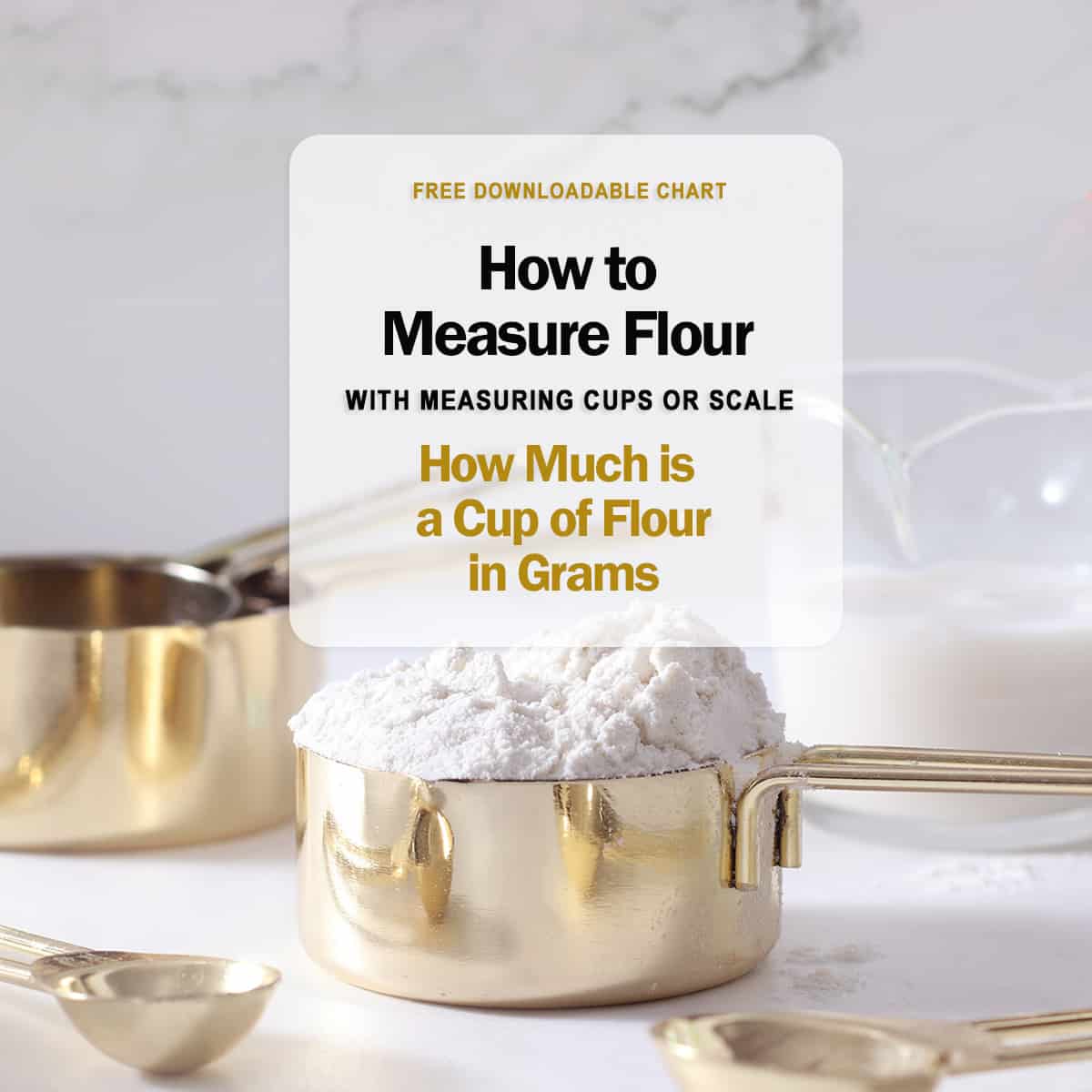
Learn how to measure a cup of flour using measuring cups or in grams using a scale in my comprehensive guide on measuring flour. Whether you're using the US customary units system or the metric system, getting the right amount of flour is key to achieving the perfect texture and consistency in your baked goods.
When trying to get an accurate measurement of 1 cup of flour, you'll find obstacles with flour types, brands, humidity and tools. I'm here to clear that up so you can just measure out 1 cup of flour confidently and get on with your recipe.
Commonly Measured Flours
Here are the flours you are likely to be working with.
All-Purpose Flour: Made from wheat. Usually white. Versatile and suitable for a wide range of recipes, from cakes to bread.
Almond Flour: Made from almonds without skin. Ideal for gluten-free and low-carb baking, imparting a nutty flavor to dishes.
Coconut Flour: Made from dried coconut meat. Another gluten-free option, absorbent and perfect for dense baked goods.
Oat Flour: Made from ground rolled oats. Adds a hearty texture and slightly sweet flavor, great for cookies and muffins. Easy to make at home with a blender.
Gluten-Free Baking Flour: A blend designed to mimic all-purpose flour, without gluten. My favorite brand is Bob's Red Mill (blue bag.)
How to Measure Flour
You have two options on how to measure flour, using measuring cups or a kitchen scale. When I say measuring cups, I mean the metal or plastic ones like this measuring cup set, not a glass one.
Warning: Never use a glass measuring cup to measure flour because you can't level it off. Glass measuring cups are for liquids only.
Using Measuring Cups:
- Spoon flour into a measuring cup like this until it overflows.
- Level off the top with a straight edge of a knife for an accurate measure.
- Avoid packing flour into the cup, which can lead to too much flour unless the recipe specifically requests packed flour as sometimes happens with almond flour.
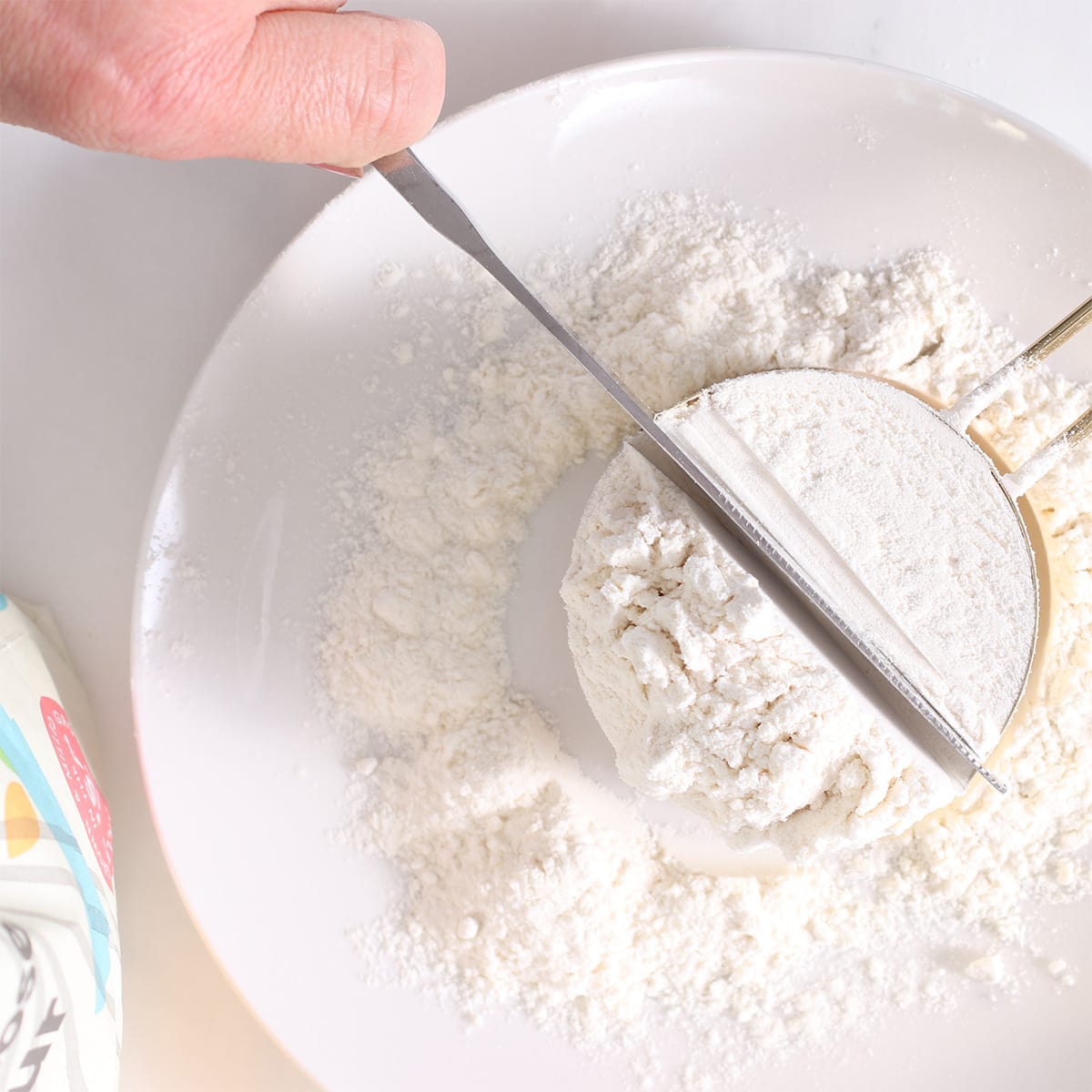
Using a Scale:
- Place your bowl or container on the scale and press the scale's button to zero it out in grams which removes the weight of the container (also called to tare).
- Spoon in flour watching the grams as they climb until you reach the desired weight.
- Ideal for precise measurements and consistency in recipes.
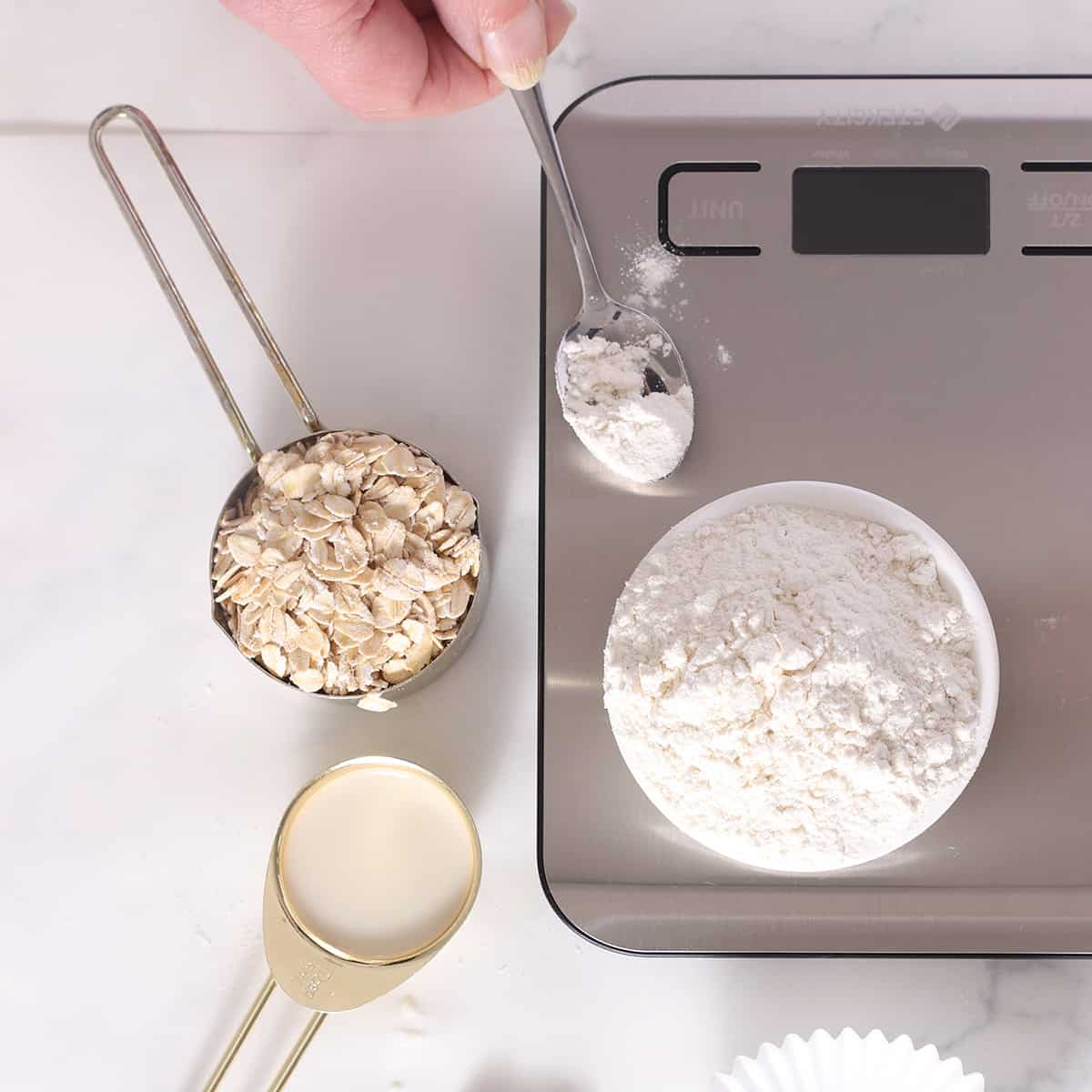
Customary vs. Metric System
The United States follows the customary units measurement system, whereas the rest of the world uses the metric system. Regarding measuring flour, this means US cooks are more likely to use cups to measure flour, whereas everyone else will use grams and weigh it.
Experienced cooks within the US and otherwise highly recommend weighing no matter the system you follow. I think that is wise advice for unforgiving recipes but I personally find the fluff-and-level method using cups gives me perfect results every time in my no bake recipes which are forgiving, but even in my baking recipes such as healthy chocolate cake and my vegan vanilla cake.
How Much Is a Cup of Flour?
Customary Units (Cups):
1 cup of all-purpose flour weighs approximately 123 grams.
I got this number of 123 grams by taking the average of weights of many different brands. Brands of baking flours vary in weights because of grind size, protein content, humidity and sifting.
👉Want to Save This Recipe?
Different Weights Between All Purpose Flour Brands
Here are some general weight differences you might encounter between popular white baking flour brands:
King Arthur Flour: King Arthur Flour tends to be on the heavier side. On average, 1 cup of King Arthur all-purpose flour weighs around 127 grams.
365 Whole Foods Brand: Whole Foods' 365 brand of all-purpose flour is usually a bit lighter than King Arthur. Expect 1 cup of 365 all-purpose flour to weigh approximately 123 grams.
Pillsbury Flour: Pillsbury flour falls somewhere in the middle in terms of weight. 1 cup of Pillsbury all-purpose flour generally weighs around 120 grams.
Gold Medal Flour: Another popular brand, Gold Medal flour, is often similar in weight to Pillsbury. You can expect 1 cup of Gold Medal all-purpose flour to weigh around 120 grams as well.
Safeway or Giant Brand: Store brands like Safeway or Giant may vary slightly, but they often align closely with Pillsbury and Gold Medal. 1 cup of these store brands' all-purpose flour typically weighs around 120 grams.
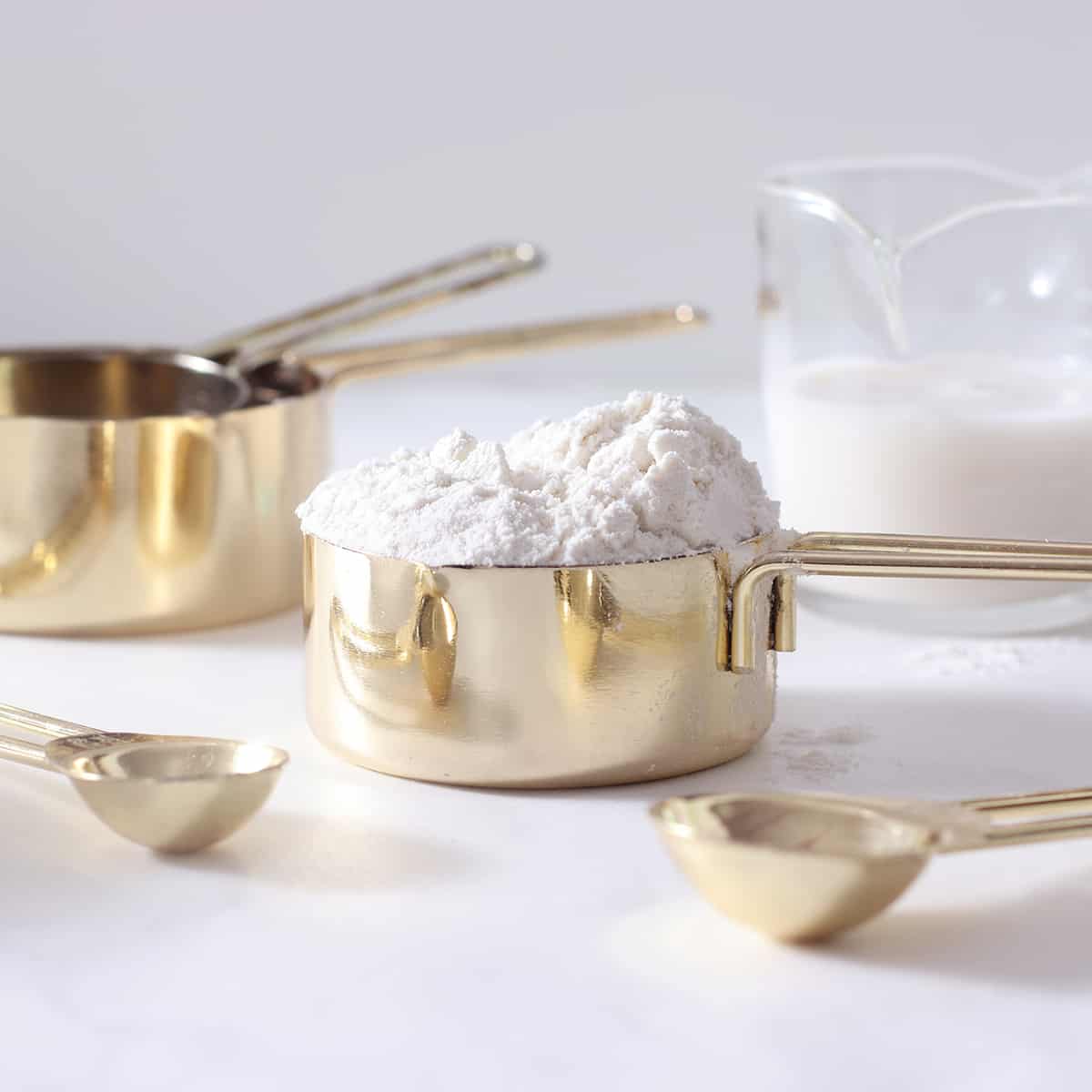
How to Store Flour
Moisture in the air and can lead to clumpy, heavier flour. This will lead you to add too much flour and make your recipe drier.
A way to avoid is keep it stored until ready to use, and sift in a fine mesh strainer to remove clumps. If you measure flour in a humid environment without adjusting for this extra moisture, you'll end up with more flour than the recipe intends, leading to dry and dense baked goods.
Healthy Alternative Flours
Almond Flour: High-fat almond flour is particularly prone to clumping in humid conditions. It's best to store it in the fridge or freezer to maintain freshness and prevent clumping.
Oat Flour: Oat flour, which absorbs moisture easily, should also be stored in airtight containers in a cool, dry place.
Coconut Flour: This highly absorbent flour can become clumpy in humid conditions. Sifting before use can help break up clumps.
📌Measurement Chart of Flours
| flour | cups | grams | ounces |
|---|---|---|---|
| all purpose flour | 1 cup | 123 grams | 4.3 oz |
| whole wheat flour | 1 cup | 130 grams | 4.8 oz |
| almond flour | 1 cup | 112 grams | 3.9 oz |
| buckwheat flour | 1 cup | 120 grams | 4.1 oz |
| chickpea flour | 1 cup | 85 grams | 3 oz |
| coconut flour | 1 cup | 128 grams | 4.6 oz |
| oat flour | 1 cup | 92 grams | 3.2 oz |
| quinoa flour | 1 cup | 110 grams | 3.9 oz |
| tigernut flour | 1 cup | 130 grams | 4.8 oz |
Helpful Flour Substitutions
Replace 1 cup of all-purpose flour with 1 cup of almond flour.
Oat flour can substitute for all-purpose flour. Replace 1 cup of all purpose flour with 1 ¼ cup of oat flour. You may need to adjust liquid in the recipe.
A List of Unusual Flours
Here are a few flours you may not have been aware of. They serve as more nutritious, can provide more fiber, and are all gluten free.
Chickpea Flour: Made from ground dried chickpeas, this flour is gluten-free and commonly used in Mediterranean and Indian cuisines. It has a slightly nutty flavor and is excellent for savory dishes like falafel or socca (chickpea flatbread).
Tigernut Flour: Despite its name, tigernut flour is not made from nuts but rather from small root vegetables called tigernuts. It's naturally gluten-free, paleo-friendly, and adds a slightly sweet and nutty flavor to baked goods.
Cassava Flour: Derived from the cassava root, this flour is a grain-free, nut-free, and gluten-free alternative. It's commonly used in paleo and gluten-free baking and provides a smooth, fine texture to recipes.
Banana Flour: Made from dried, ground green bananas, it's high in resistant starch and great for gluten-free baking.
Quinoa Flour: Ground from quinoa seeds, it's a protein-rich, gluten-free option with a nutty flavor.
📌Free Kitchen Measuring Conversion Chart
Download my free kitchen measuring conversion chart and either post it on your refrigerator, or laminate it and add it to your recipe notebook. It can be a handy reference when you want to convert measurements to adjust a recipe, both imperial or metric.
FAQS
Use measuring cups that have flat top edges so you can level off the flour with a knife.
You can measure out 16 tablespoons of flour to equal 1 cup if you don't have a dry measuring cup.
Some Flour-based Recipes
If you found this how to useful or tried any other recipe on my website, please leave a 🌟🌟🌟🌟🌟 star rating and let me know how it went in the 📝 comments below. Thanks for visiting!
📖 Recipe
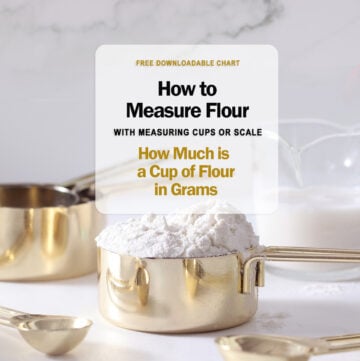
How to Measure a Cup of Flour (with cups or scale)
Equipment
Ingredients
- 1 cup flour actually a bit more to be able to overflow cup
👉Want to Save This Recipe?
Instructions
Measure with cups
- Make sure flour and tools are at room temperature.
- Put a dry spoon or fork in the bag or canister for flour and work it up and down to fluff the flour, and get some air in it.
- Set a metal or plastic measuring cup on a dish or cutting board.
- Spoon flour into the cup until it has a mountain of overflow on top and all side crevices are full, no gaps.
- Take a dry knife with a blunt side and run it over the top of the cup so the flour is leveled off evenly. Add the spillage back to the bag if it dropped on something clean.
- Add the accurately measured cup of flour to a bowl and continue on with your recipe.
Measure flour with a scale
- Make sure flour and tools are at room temperature.
- Add a measuring cup to the scale and follow instructions to zero off the cup so the scale reads 00 grams and subtracts the weight of the cup.
- OR just add the measuring cup to the scale and weigh it for grams and write down the number.
- Spoon flour into the cup until the gram number reaches what you want (128 grams for 1 cup of all purpose flour, for example).
- If you zeroed off, that number is correct. If you did not zero off, add enough flour so the screen reads 128 grams + the weight of the cup that you wrote down.
- Either way, that's your flour measurement, so add it to a bowl and continue with your recipe.

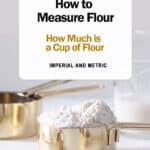

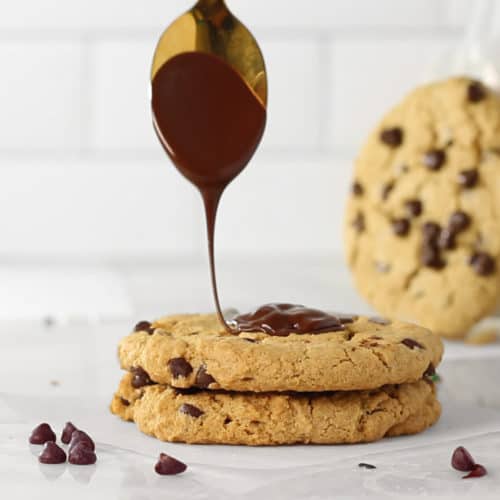
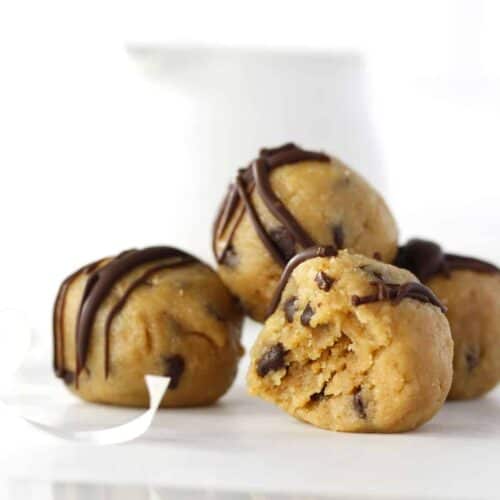




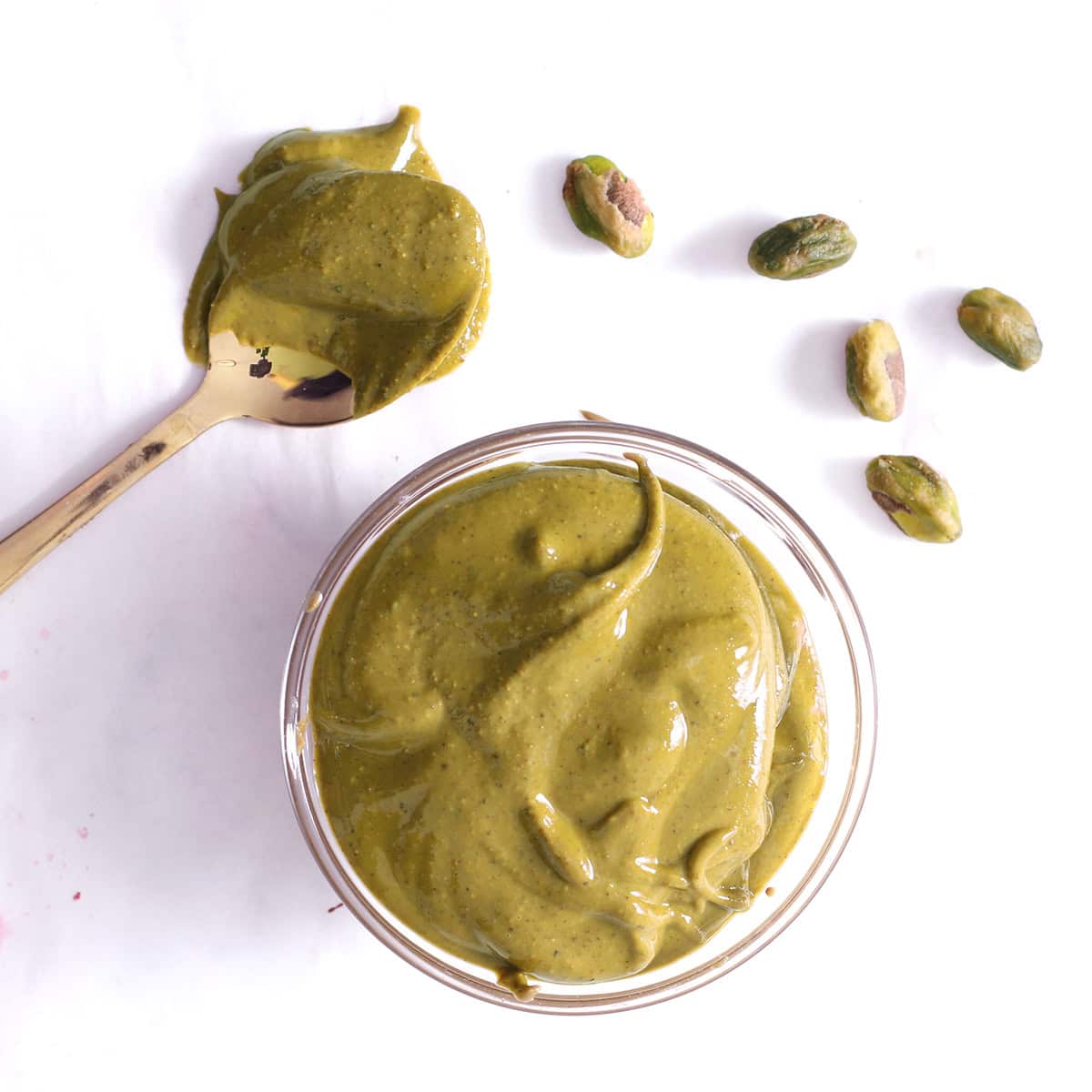
Leave a Reply